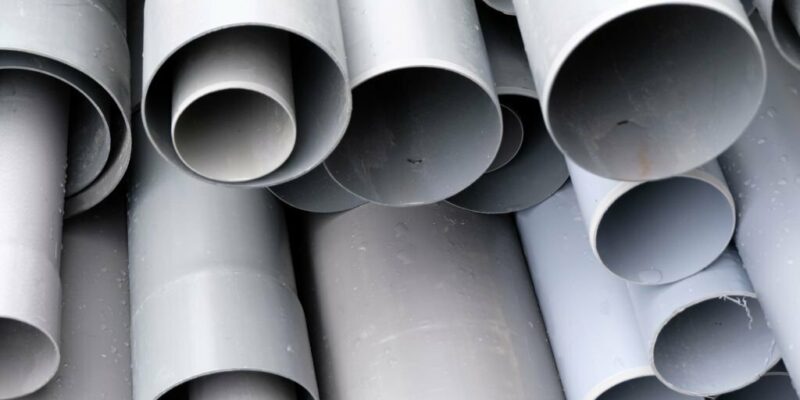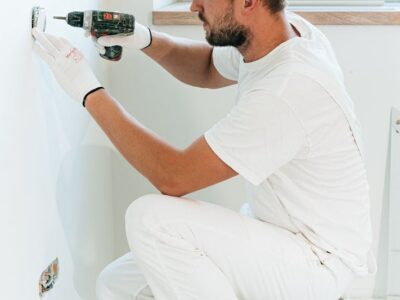
Managing storm water and waste water is crucial in underground drainage systems to ensure the safe transport of these unwanted liquids away from homes and buildings. Furthermore, choosing the right pipes for your underground drainage system is crucial to achieving this. We’ll look at some excellent pipe choices for underground drainage systems in this blog, including Schedule 40 pipes, HDPE pipes, UPVC pipes, and plumbing pipes.
1. UPVC Pipes (Unplasticized Polyvinyl Chloride):
The ideal option for underground drainage systems is UPVC pipes. However, pipes are good in durability, corrosion resistance, and cost-effectiveness.
Here are a few major advantages of using UPVC pipes for underground drainage:
- Corrosion Resistance: It exhibits high corrosion resistance. Therefore, it is ideal for underground applications where pipes are exposed to moisture and various environmental conditions, ensuring their longevity and effectiveness.
- Durability: These pipes have a long lifespan and are less likely to degrade, even when underground.
- Lightweight: UPVC pipes are relatively lightweight, making installation more accessible and less labor-intensive. Additionally, they offer numerous benefits in various underground drainage applications.
- Low Maintenance: Once installed, UPVC pipes require minimal maintenance, reducing long-term operational costs.
- Cost-Effective: UPVC pipes are cost-effective as compared to other pipe materials. It is a budget-friendly choice for drainage systems.
- Smooth Interior: The smooth interior surface of UPVC pipes ensures efficient water flow and prevents the accumulation of debris and blockages.
2. HDPE Pipes (High-Density Polyethylene):
HDPE pipes, made from high-density polyethylene, are another excellent choice for underground drainage systems. However, they offer several advantages that make them a top pick for many applications:
- Corrosion Resistance: HDPE pipes are highly resistant to corrosion, chemicals, and acidic substances. Therefore, they suit underground environments, ensuring long-lasting and reliable performance.
- Lightweight and Flexible: HDPE pipes are lightweight and flexible. Consequently, it facilitates the installation process and reduces the transportation cost, making it a practical choice for various applications.
- Leak-Proof Joints: HDPE pipes are often joined using heat fusion, creating leak-proof connections, thereby preventing water from seeping into the surrounding soil.
- Eco-Friendly: HDPE is a recyclable material, making it an environmentally friendly choice for underground drainage systems.
3. Schedule 40 Pipes:
Schedule 40 pipes commonly find application in various plumbing and drainage scenarios. Furthermore, they are typically crafted from PVC and possess several features that render them suitable for underground use.
- Strength: Schedule 40 pipes are renowned for their robustness. Therefore, it can endure the pressure and stress associated with subterranean conditions, making it a dependable choice for underground applications.
- Easy Installation: These pipes are easy to cut and join, simplifying the installation process.
- Cost-Effective: Schedule 40 pipes are cost-effective and readily available, making them a practical choice for many drainage projects.
- Chemical Resistance: They resist chemicals and corrosion, ensuring a long service life.
- Suitable for Residential Use: People commonly use Schedule 40 pipes in residential drainage systems, and they deliver reliable performance.
4. Plumbing Pipes:
Plumbing pipes serve a universal purpose in facilitating water distribution within skyscrapers and disposing of waste. Furthermore, people typically craft these pipes from copper or galvanized steel. These pipes are not ordinarily designed for underground use; however, specific circumstances may necessitate their installation.
Here are some key points to consider when using plumbing pipes for underground drainage:
- Corrosion Resistance: When selecting plumbing pipes, consider their corrosion resistance, especially if they will be exposed to moisture and soil.
- Local Regulations: Furthermore, always check local building codes and regulations to ensure that your area permits the use of plumbing pipes for underground drainage.
- Protective Measures: When using plumbing pipes underground, consider implementing protective measures to prevent damage from soil shifts or environmental factors.
- Limited Application: Plumbing pipes are better suited for indoor plumbing. However, in specific situations, people can adapt them for underground use.
Final thoughts
Adamjee pipes are an ideal option for your underground drainage system. Depending on your specific project requirements, budget constraints, and local regulations, you can make an informed choice. Moreover, UPVC pipes, HDPE pipes, Schedule 40 pipes, and plumbing pipes each offer distinct advantages, making them suitable for various applications. Additionally, it plays a vital role in assessing your needs carefully and consulting experts and standards when selecting and installing pipes for your underground drainage system. You can ensure the efficient and reliable operation of your drainage system for years to come when you choose Adamjee pipes.
Visit here for more informative blogs










